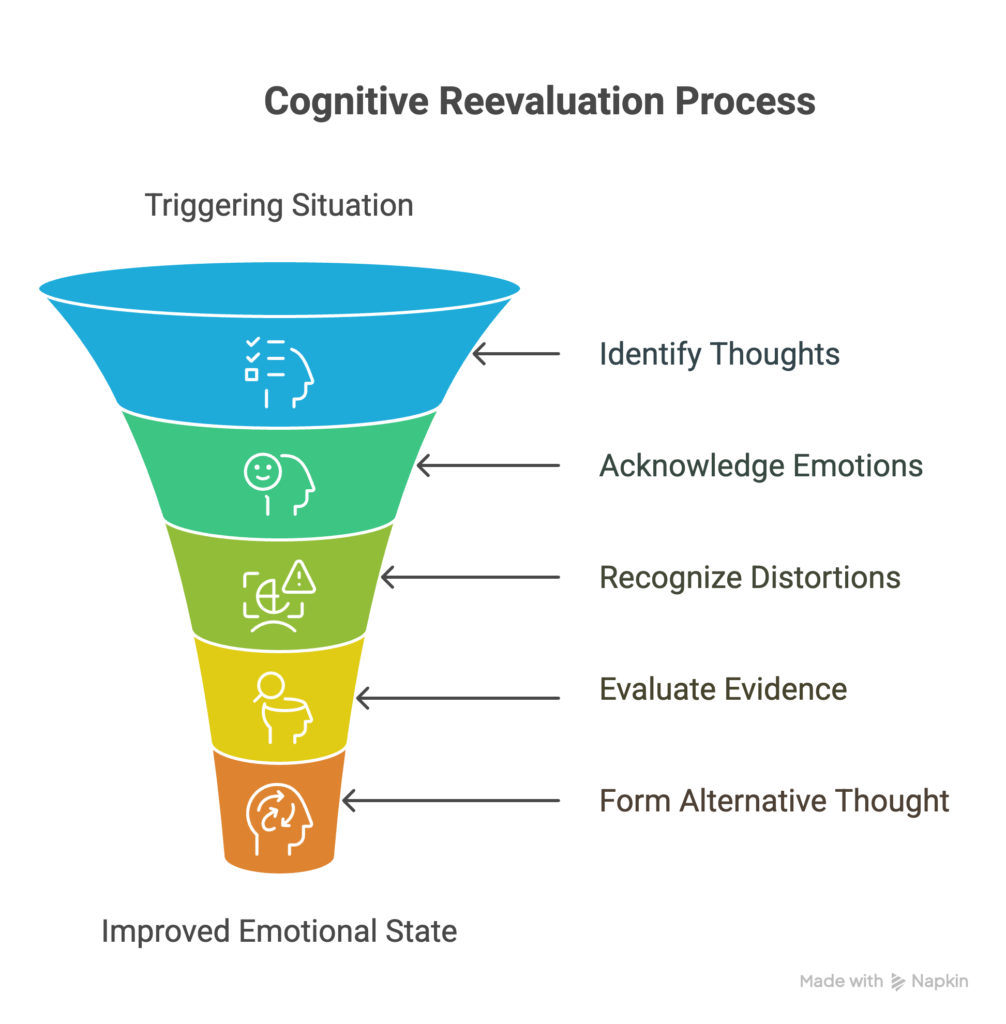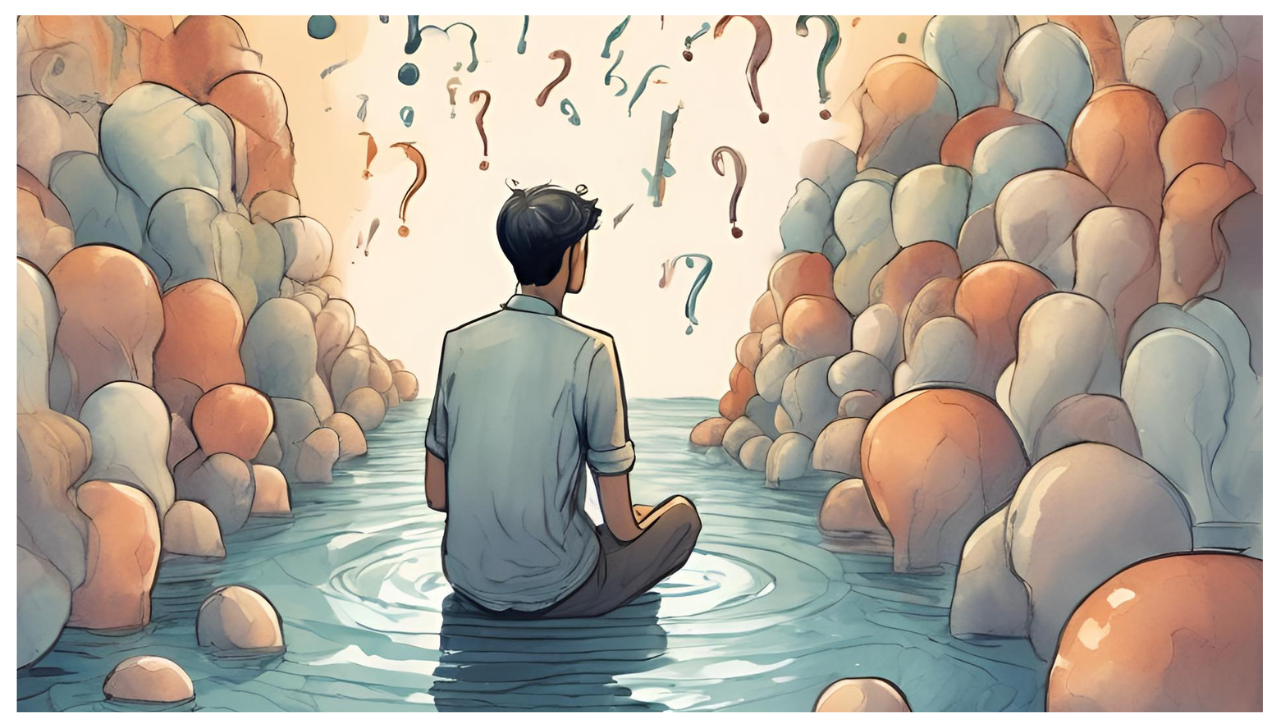What is Thought Journaling
Thought journaling is a mental wellness practice where you regularly write down your thoughts, especially negative or recurring ones, and then examine and challenge them. It’s not just about dumping feelings on a page but actively engaging with your thoughts in a way that encourages clarity, objectivity, and emotional growth. While it shares similarities with regular journaling, thought journaling is more structured and focused. It’s often rooted in cognitive behavioral therapy (CBT), where the goal is to identify distorted thinking patterns and replace them with more balanced, rational thoughts.
At its core, thought journaling is about awareness. When you notice yourself spiraling into anxiety, self-doubt, or anger, your journal becomes a tool to slow down, observe, and untangle what’s going on in your head. It doesn’t require perfect grammar or beautiful prose; it just requires honesty and a willingness to reflect.
It’s often rooted in cognitive behavioral therapy (CBT), where the goal is to identify distorted thinking patterns and replace them with more balanced, rational thoughts.
Why Do People Use Thought Journaling?
People turn to thought journaling for a variety of reasons, but the common thread is a desire to better understand themselves. Whether it’s to process stress, manage anxiety, untangle overthinking, or make sense of an emotional event, thought journaling provides a safe space to confront mental noise without judgment.
Many people use it as a coping strategy. When emotions feel overwhelming or irrational, writing them out and analyzing their origin can be incredibly grounding. Some use it for personal growth—to track patterns, understand triggers, or explore decision-making processes. Others lean on it during therapy as a tool to prepare for sessions or extend the work they do with a therapist.
More practically, it also serves as a record. Over time, it becomes a personal archive of thought processes, emotional evolution, and insights. You can look back and see how far you’ve come or identify recurring themes that need more attention.

How Does Thought Journaling Work?
Thought journaling works by making your thoughts visible. When left in your head, thoughts can feel like an overwhelming swirl—hard to grasp or analyze. Putting them on paper gives them form. From there, you can begin to identify which thoughts are helpful, which are harmful, and which are based more on emotion than fact.
The process usually involves:
- Writing down a triggering event or situation.
- Describing the automatic thoughts that came up.
- Identifying the emotions associated with those thoughts.
- Challenging the thoughts by asking critical questions: Is this true? What evidence do I have? Is there another way to look at this?
- Rewriting the thought into a more balanced, constructive version.
Over time, this process helps train your brain to automatically challenge negative thoughts, leading to more emotional resilience and mental clarity. It’s like building a muscle—at first it’s clumsy and unfamiliar, but with repetition, it becomes second nature.
What is the Structure of Thought Journaling?
The structure of thought journaling is often more rigid than other forms of journaling, which is one of its strengths. This framework helps you focus and keeps your writing purposeful. A typical structure includes:

- Situation: Describe what happened. What was the trigger?
- Thoughts: What went through your mind?
- Emotions: What did you feel?
- Cognitive Distortions: Are you catastrophizing? Jumping to conclusions? Blaming yourself unfairly?
- Evidence For/Against: What proof do you have that your thought is true or false?
- Alternative Thought: How else can you view the situation?
- Outcome: How do you feel now after reevaluating?
This process can be done in a notebook, on a digital app, there are number of journaling apps available on Android and iOS, or through printable templates. The key is consistency and honesty. You don’t need to use the structure every time, but having a familiar format makes it easier to get started, especially on difficult days.

Thought Journaling or Thought Diary – What’s the Difference?
The terms “thought journal” and “thought diary” are often used interchangeably, but there are subtle differences. A thought journal typically implies a broader, more flexible approach to recording thoughts and reflections. It may combine structured entries with freeform writing.
A thought diary, on the other hand, tends to follow a stricter, more clinical format—often aligned with CBT frameworks. It’s more likely to use tables, prompts, and specific sections for analyzing thoughts, identifying cognitive distortions, and tracking emotional changes.
Both are valuable. Which one you choose depends on your goals. If you’re looking for deep introspection with room to ramble, a thought journal might suit you better. If you want a concise, therapeutic tool for managing mental health symptoms, a thought diary could be more effective.
How to Start Thought Journaling (Without Overthinking It)
The beauty of thought journaling is that there’s no perfect way to begin. The hardest part is often starting. Here are a few simple steps to help you dive in:
- Pick your medium. Some people like physical notebooks. Others prefer digital formats for privacy or convenience. Use what feels right.
- Set a time. Consistency helps. Try writing at the same time each day—even 5 minutes before bed.
- Use prompts. If you’re stuck, start with: What’s bothering me today? What thought keeps coming back?
- Be honest. No one is grading your entries. Write without censoring.
- Don’t chase perfection. Your thoughts won’t be organized, especially at first. That’s okay. You’re not writing a novel.
Over time, thought journaling will become a familiar habit. You’ll find your own rhythm, your own voice. What starts as an effort will become second nature—a safe space to unload and recalibrate.
Thought Journaling vs. Regular Journaling
Regular journaling is broad. It can be about your day, your dreams, your goals, or anything you feel like expressing. There are no rules. It’s open-ended and often used as a creative or reflective outlet.
Thought journaling, on the other hand, has a therapeutic angle. It’s designed to identify specific thoughts and examine them critically. While regular journaling may skim the surface of how you feel, thought journaling digs deep into the why and how behind those feelings. It’s like comparing a general diary entry to a therapy worksheet—both are valid, but they serve different functions.
If you’ve kept a journal before and felt like you were just venting without much relief, thought journaling might be the missing piece. It adds structure and purpose to your reflections.
What You’ll Discover Over Time
Thought journaling reveals patterns. The more you write, the more you’ll start to notice recurring themes—self-criticism, fear of failure, people-pleasing, perfectionism. You’ll also see how your emotional reactions shift over time.
You might discover that certain situations always trigger the same thought loops. Or that your anxiety spikes around specific people or events. With this awareness, you gain power. You can begin to prepare for those moments, or change how you respond to them.
You’ll also likely find that your thoughts aren’t always accurate. They feel real, but they’re not always rooted in fact. Thought journaling gives you the distance to question your assumptions. This process alone can be transformative.
And perhaps most importantly, you’ll build a stronger relationship with yourself. When you write regularly, you learn your own language. You begin to recognize your needs, your values, your growth. You become your own observer and your own guide.

FAQs on Thought Journaling
Do I have to journal every day?
No, you don’t have to journal every day—but consistency helps. Think of it like exercise: the more you do it, the stronger the benefits. Some people journal daily; others only write when they feel overwhelmed. There’s no one-size-fits-all. Try to find a rhythm that works for your lifestyle. Even once or twice a week can make a difference.
What if someone reads my journal?
Privacy is a valid concern. If you’re using a physical notebook, consider keeping it in a secure place. If you’re more comfortable digitally, password-protected apps can offer peace of mind. Remember, this is your space. The goal is to be honest with yourself, not perform for others. If privacy worries are holding you back, start small. You can always destroy entries later if it helps you feel safer.
Can this really help with anxiety or depression?
Yes. Thought journaling is a widely recommended technique for managing symptoms of anxiety and depression. By externalizing your thoughts, you reduce their emotional charge. You also build skills in cognitive restructuring—replacing negative patterns with healthier ones. That said, thought journaling isn’t a substitute for therapy. It’s a powerful self-help tool, especially when used alongside professional support.
What if I just end up writing the same thing over and over?
That’s more common than you think. Repetition is part of the process. If certain thoughts keep resurfacing, it’s a sign they need attention. Over time, you’ll start to notice nuances and shifts. Eventually, those repeating patterns can guide you toward deeper insights and real change. Don’t worry about variety—worry about honesty.
Thought journaling is a deeply personal practice that blends structure with introspection. It’s not about producing beautiful prose or fixing yourself overnight. It’s about creating space—space to reflect, to question, to grow. Whether you’re struggling with anxiety, navigating life changes, or simply trying to understand yourself better, this practice offers a grounded, accessible way forward.
The beauty of thought journaling lies in its simplicity. All you need is a pen and a willingness to explore your mind. And with time, you might just find that the most powerful insights were already inside you—waiting to be written down.

Leave a Reply